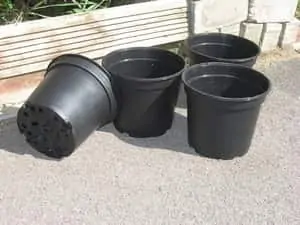Fungal infections are really cruel, but when it comes to plants, they are particularly deadly. If your plant is going through one, it might end up being rotten or even die, but who wants to see their houseplant die? So, fungicides are the best way to go if you want to free your plant from fungi.
When it comes to fungicide usage, it is easy as you just have to cut the infected part and just spray the fungicide on your plant. There are a few more crucial steps that also go into this process so let’s find out what these steps are but before that, let me tell you why fungicide is important for your plant.
How to Use a Fungicide on Your House Plants? The best way is to spray them. You should take the houseplant outdoors and spray it in the early morning or evening hours. Pick a day when the temperature isn’t going to be above 85 degrees. Put them in the shower so it’s not getting on everything.
Table of Contents
Why Should You Use a Fungicide?
Fungicides are pretty common among gardeners and planting enthusiasts as they have the tendency to kill the Fungi that are affecting your plant. Fungicides also stop the Fungi from coming back if used consistently and stop the fungi from affecting other parts of the plant.
You can buy organic fungicides as they are readily available in the market or use house plant hacks such as baking soda to eliminate fungus. You can also use a fungicide as a preventative so that the fungi never attack your plant. It is really important to know that fungicide is only effective for fungal diseases in plants and not for viral and bacterial ones.
Step By Step Guide How to Use a Fungicide On Houseplants
Let’s walk you through the steps of using a fungicide for your houseplants, but in the end, it all comes down to preventive measures.
Check The Temperature
Before you spray fungicide on your plant, make sure that you check the temperature because if the temperature is too hot, you should avoid using fungicide. The reason is that fungicides usually contain different types of oil, and when they are sprayed on the plant, they tend to burn the leaves in higher temperatures, and who would want to see their precious leaves being barbequed.
Patch Test
To be entirely sure that the fungicide is going to work for your houseplant without harming it, you can do a patch test by spraying it on just one leaf and waiting for a day or half to see your plant’s reaction.
Once you see that the plant has not responded negatively to the fungicide, it means that you are good to go, so you proceed with your process.
Isolation
It is yet another very important step. The moment you notice that your plant is going through any type of fungal disease, isolate it immediately not to affect other houseplants. Place your plant in an open environment with proper air and light.
Trim
Before spraying your fungicide, cut all the infected leaves because they can infect your whole plant, so taking out a few of those black sheep leaves is completely fine. Cutting the leaves should not be a problem because if you do not cut them, they will eventually fall because of the disease, so save the future leaves of your houseplants and cut the infected ones timely.
Spray Time
Spray the plant with fungicide by following the instructions given on the box because each fungicide has its own composition, so reading the manual and instructions are very important. Also, let the fungicide solution dry out properly before watering your plant, or you will wash off the solution, which will decrease its effectiveness.
Tips To Prevent Fungal Infections
If you follow the following tips, you won’t have to disturb your plant constantly with different fungicides, so get a pen and paper because it matters for your house plant’s health.
Drainage Holes

Drainage holes in the pot play a key role in the overall health of your plant as they drain the excess water and give your plants a balanced environment. Check the drainage holes regularly to spot any clogging because if the water is not being drained properly, it can provide your soil with excessive moisture and promote the growth of fungi.
Watering Routine
If you are watering your plant in the evening, stop it right away because at night, the soil of your houseplant cannot dry out properly, and the moisture attracts fungal infection, so it is best to water your plants in the morning and give them some time to dry out.
Preventive Measures
If you live in a humid area and want to keep your plant safe from fungal infections, go for a homemade and diluted baking soda and water solution because it prevents the fungi from attacking your plants. You can also use any commercial fungicide every week to prevent the growth of fungi.
Do Not Overwater
Overwatering is a very prominent cause of fungal infections, so every time you water your plant, check whether it actually needs watering or not. You can check it by touching the soil 2 inches deep in the pot. If the soil feels moist, then your plant does not need water, and if you water it, it will suffer from overhydration.
Give Them Space
Your houseplants need some air and space, so if you have kept them in a jam-packed environment with tons of other plants, they are prone to suffer fungal infections. So, if you want to save your houseplants, do not overcrowd them as they won’t be able to breathe properly then.
You can also buy an oscillating fan that can help with providing air to your plant if you don’t have enough space to incorporate all your plants.
Conclusion
Lastly, we would like to suggest that prevention is always better than treatment, so make sure you take all the preventive measures, but if the fungal infection still hits your plant, you can easily get rid of it through a fungicide.
Moreover, you must give some time to your plants and pay attention because only then can you spot the infections and diseases timely. Wishing your plants, a happy fungicide free day!
Recent Posts
Have you found yourself wondering, 'why is my bamboo growing so slow?' Despite the fact that bamboo plants are remarkably fast-growing, it can sometimes take months (or even years!) to see any signs...
Miracle-Gro is a huge help when you are trying to get decent yields out of your plants or if you want them to thrive. However, you may have noticed that a single dose of fertilizer does little to...

